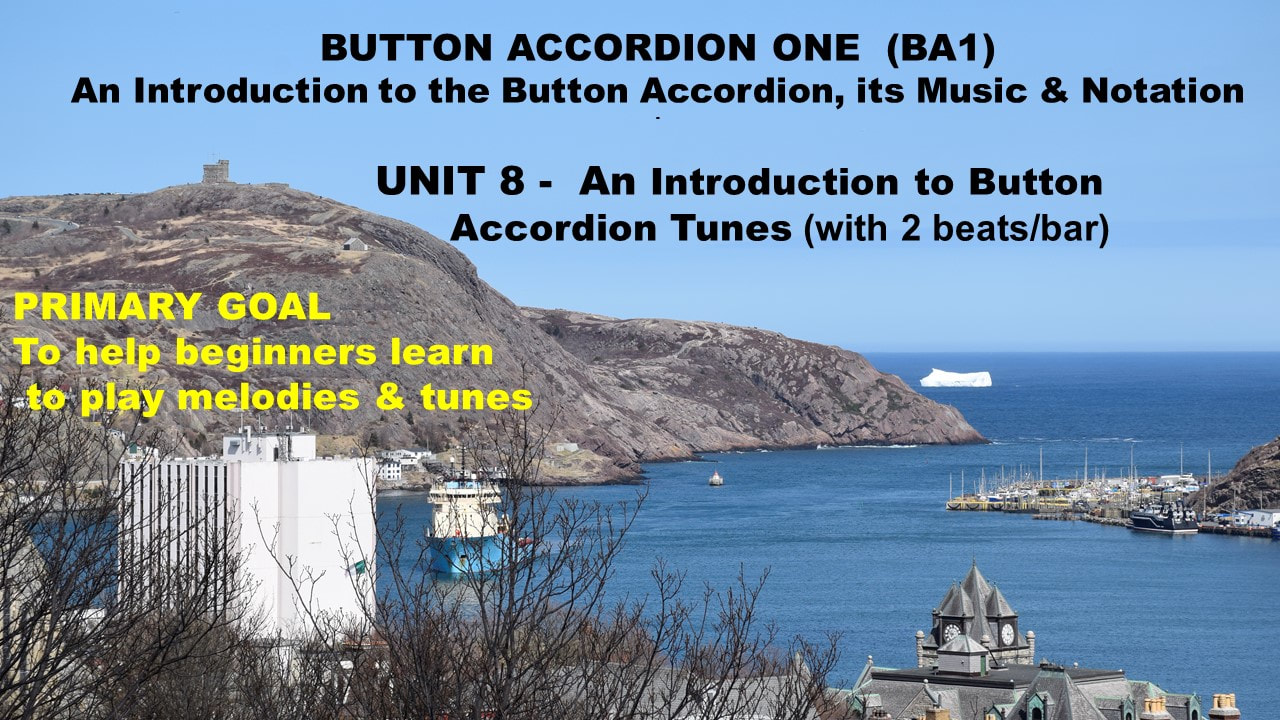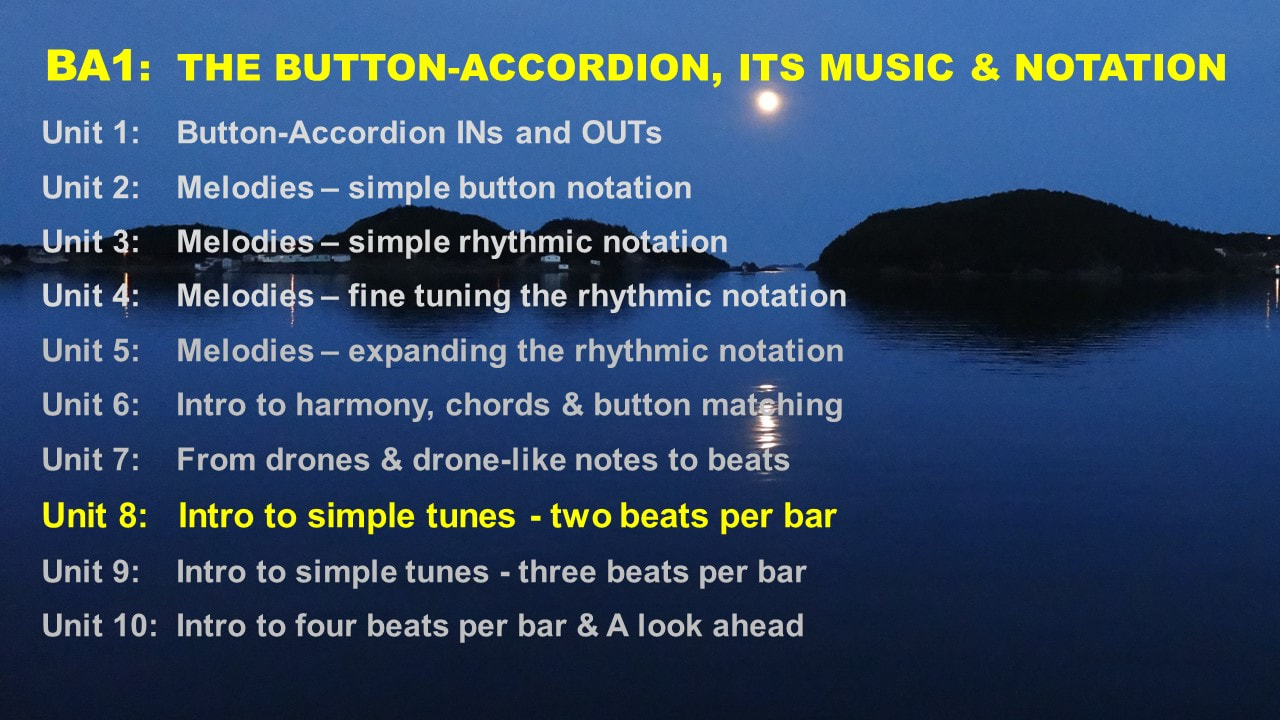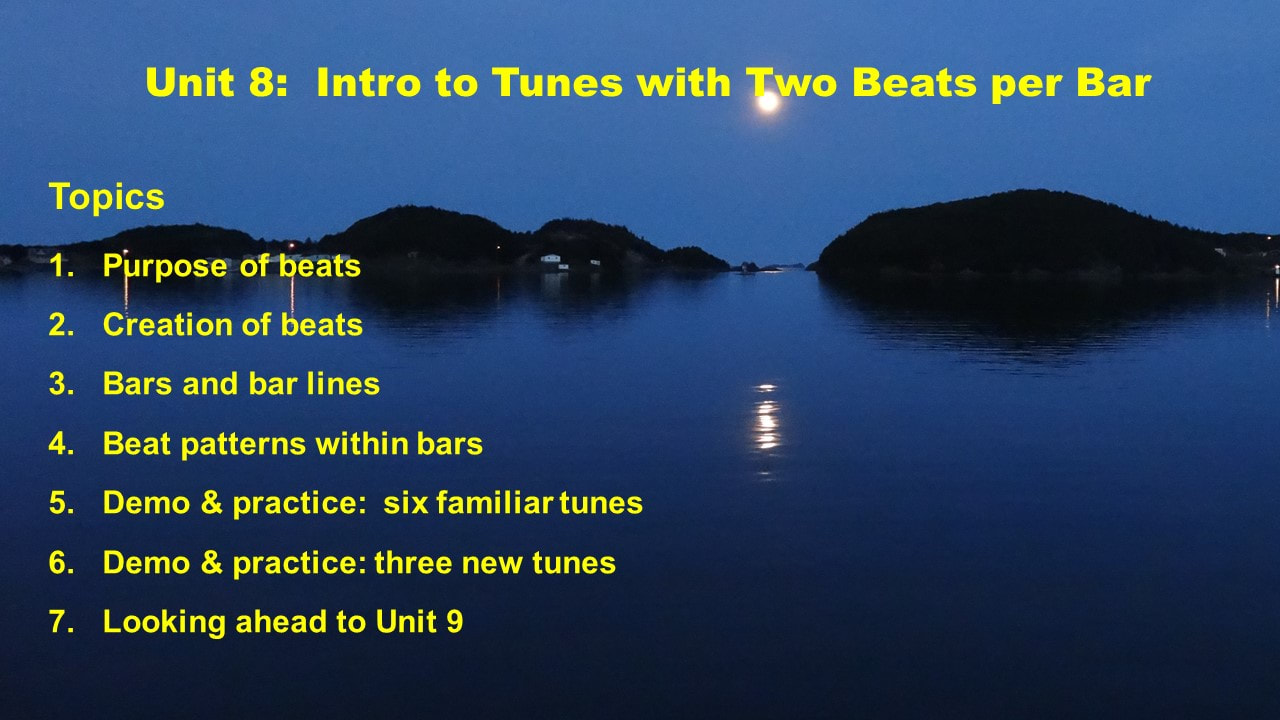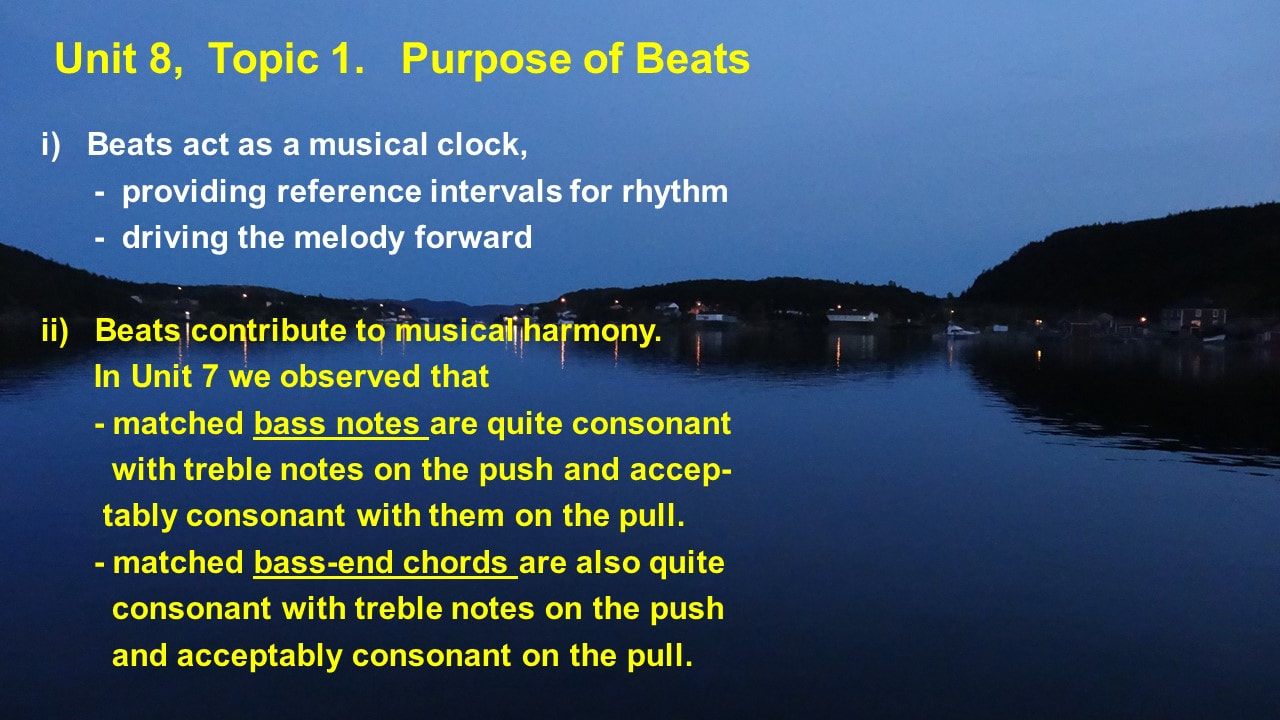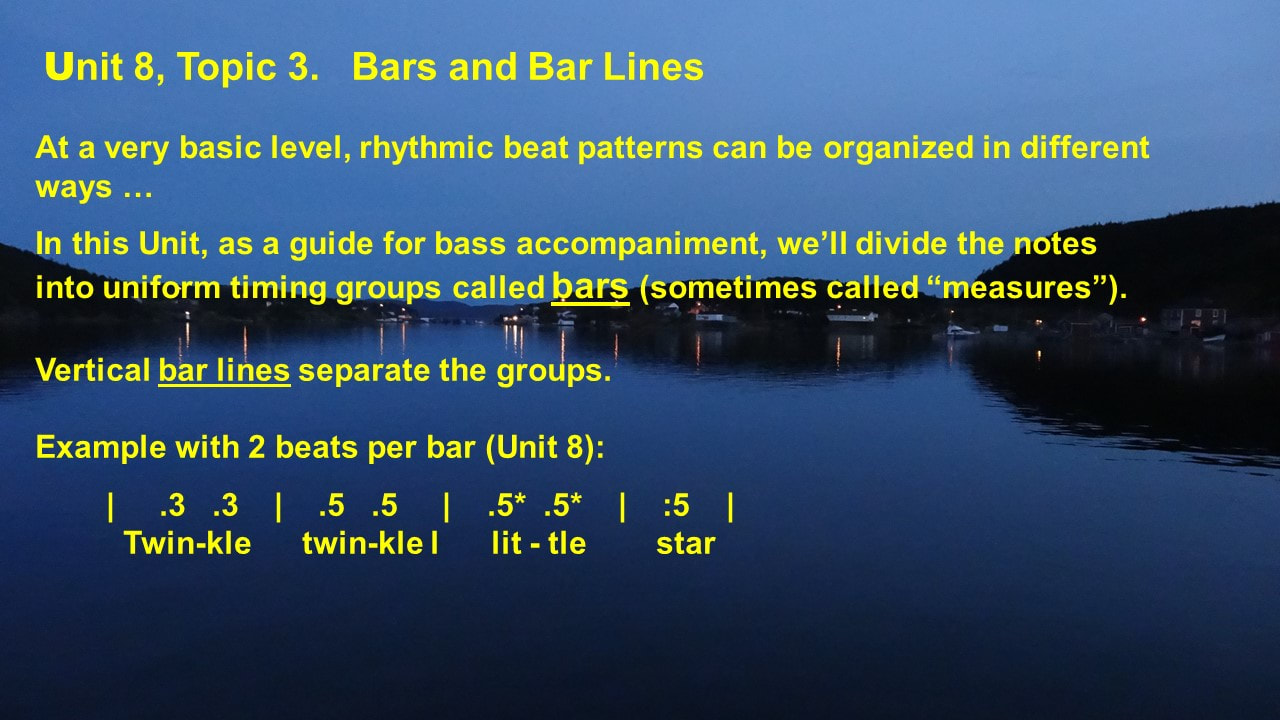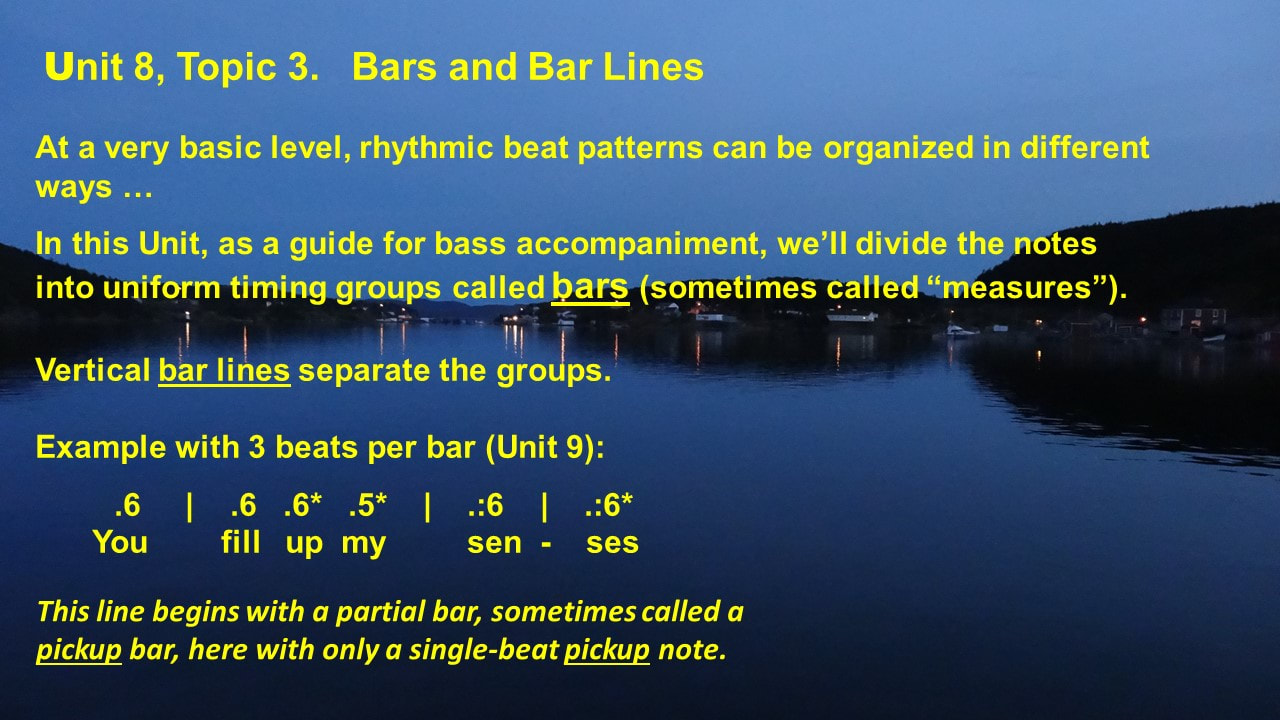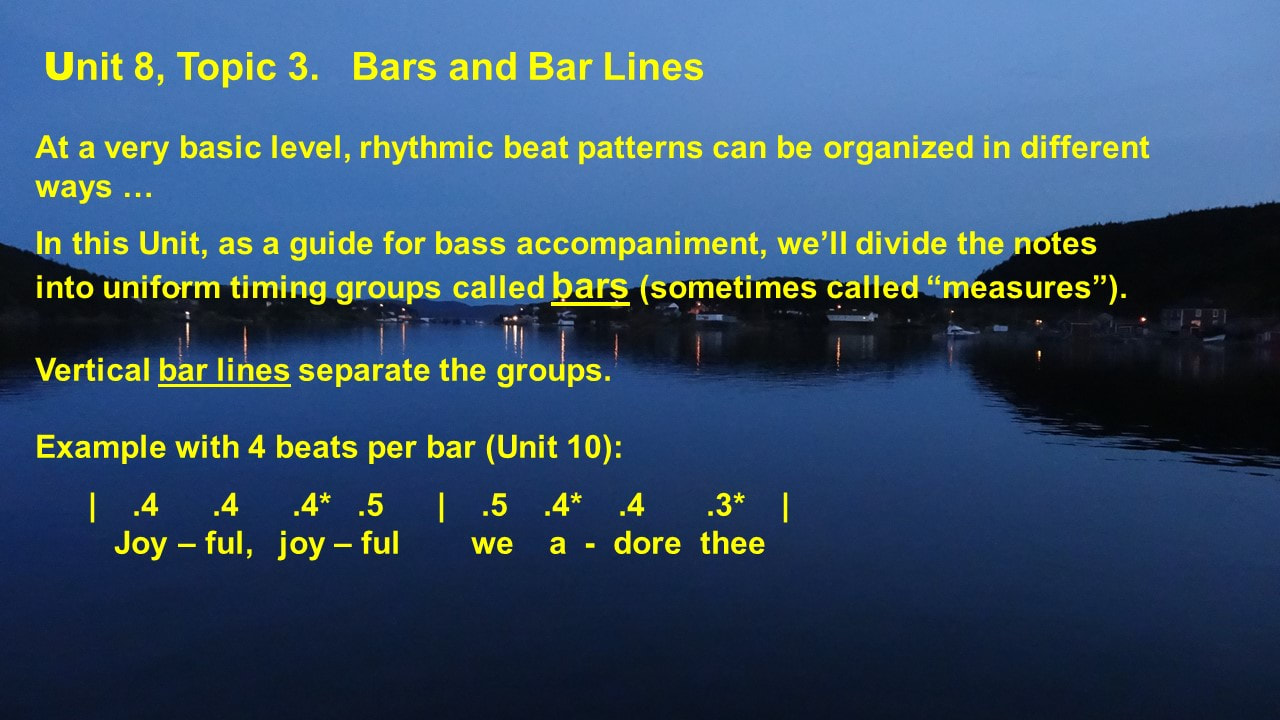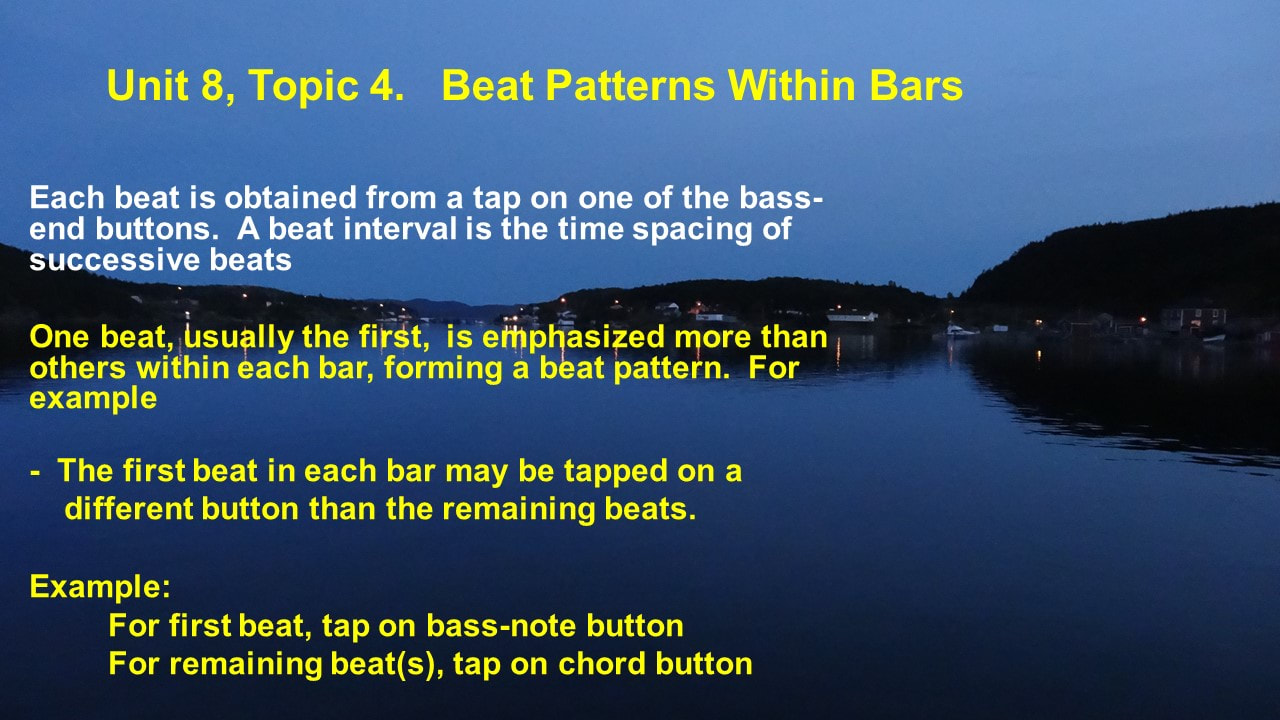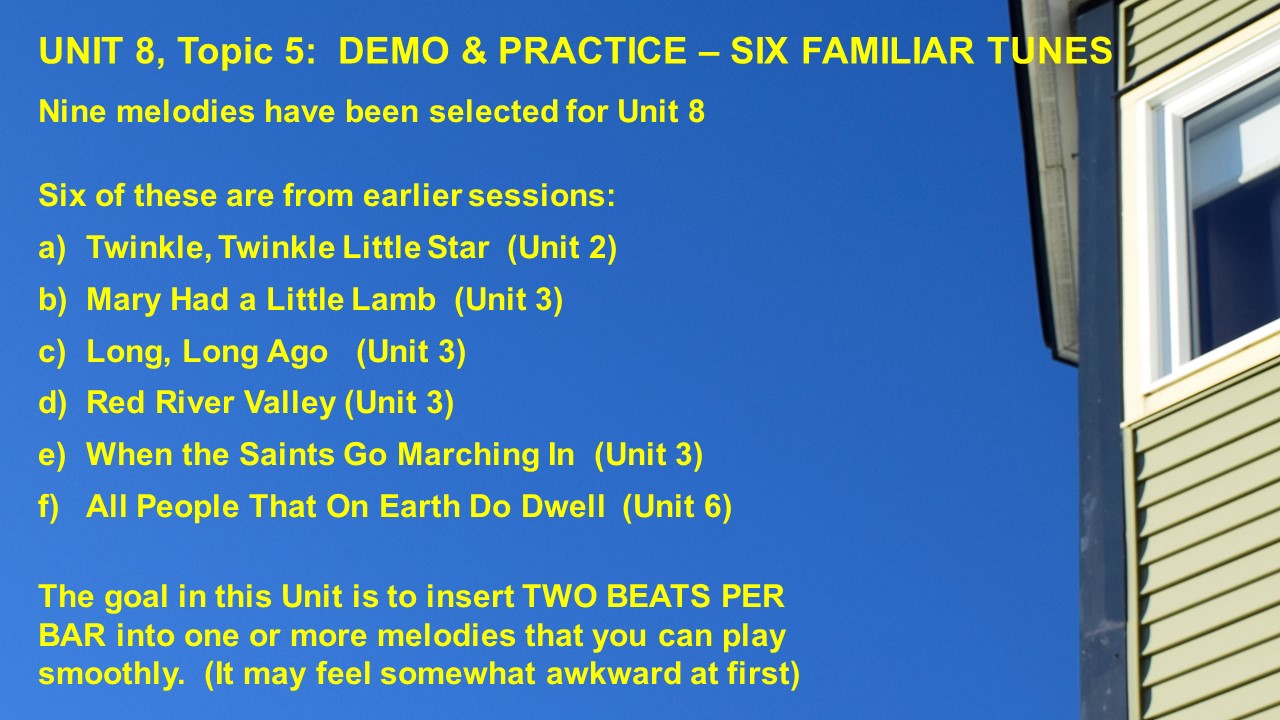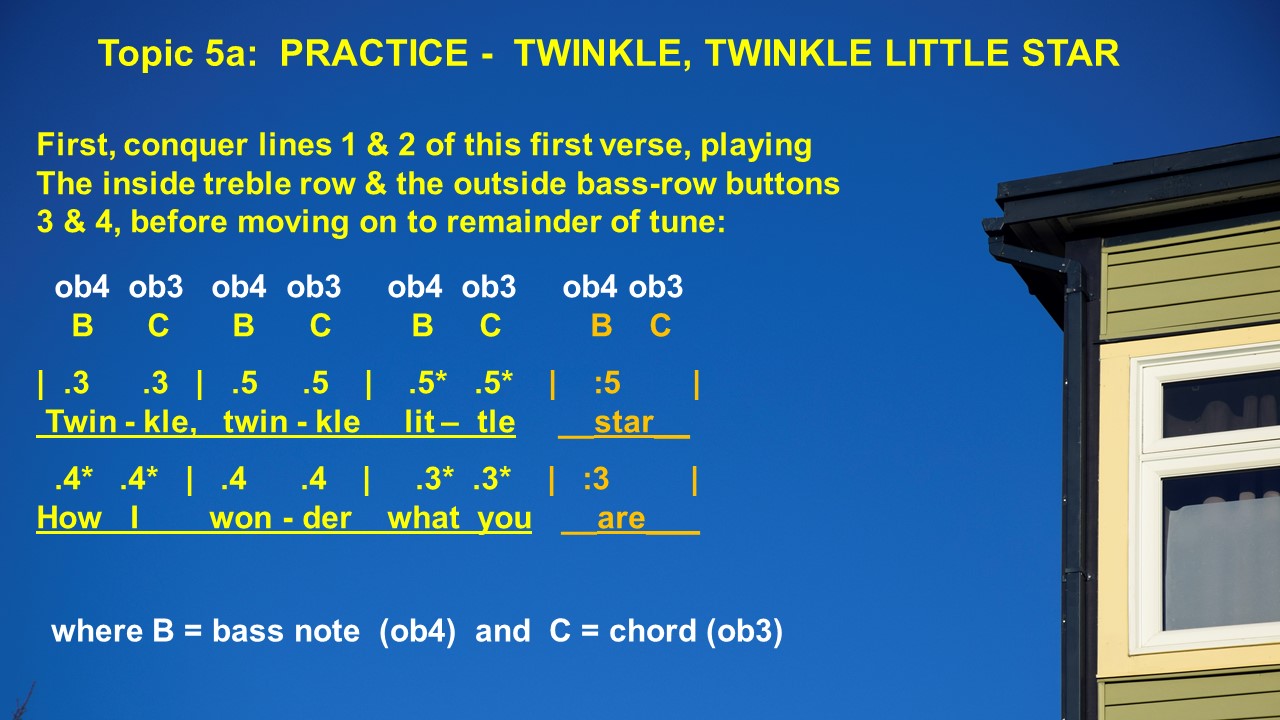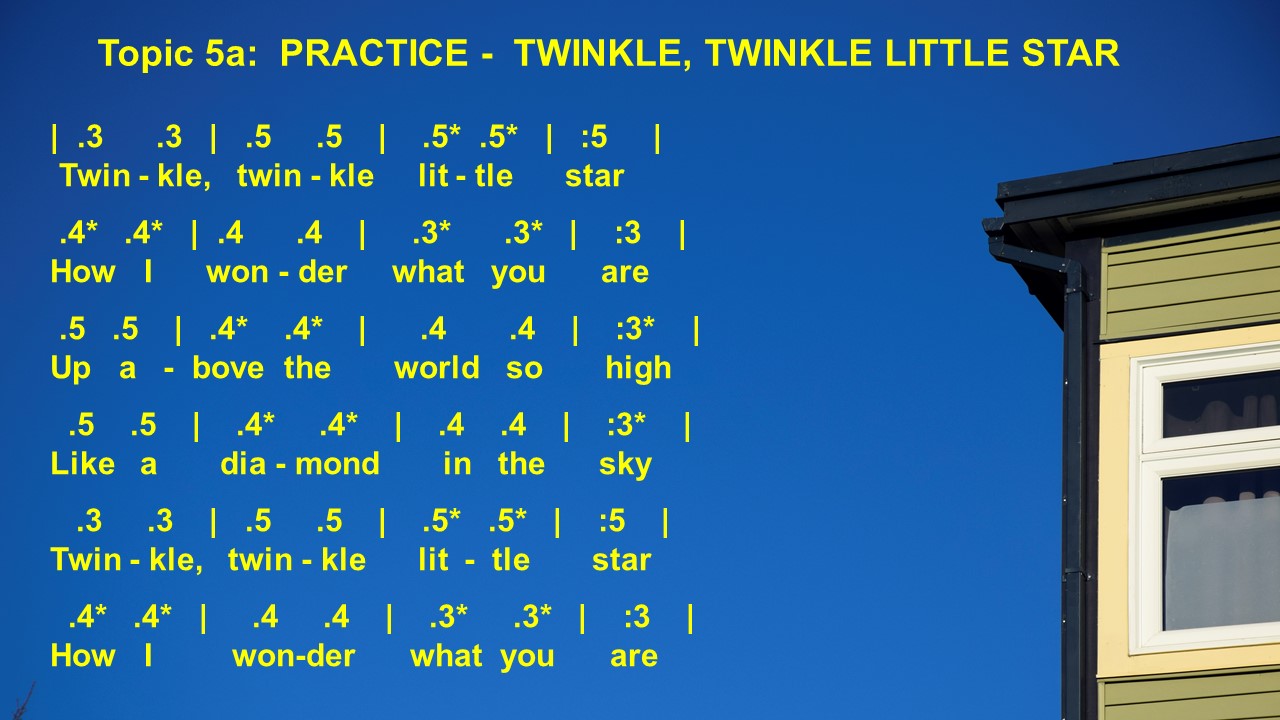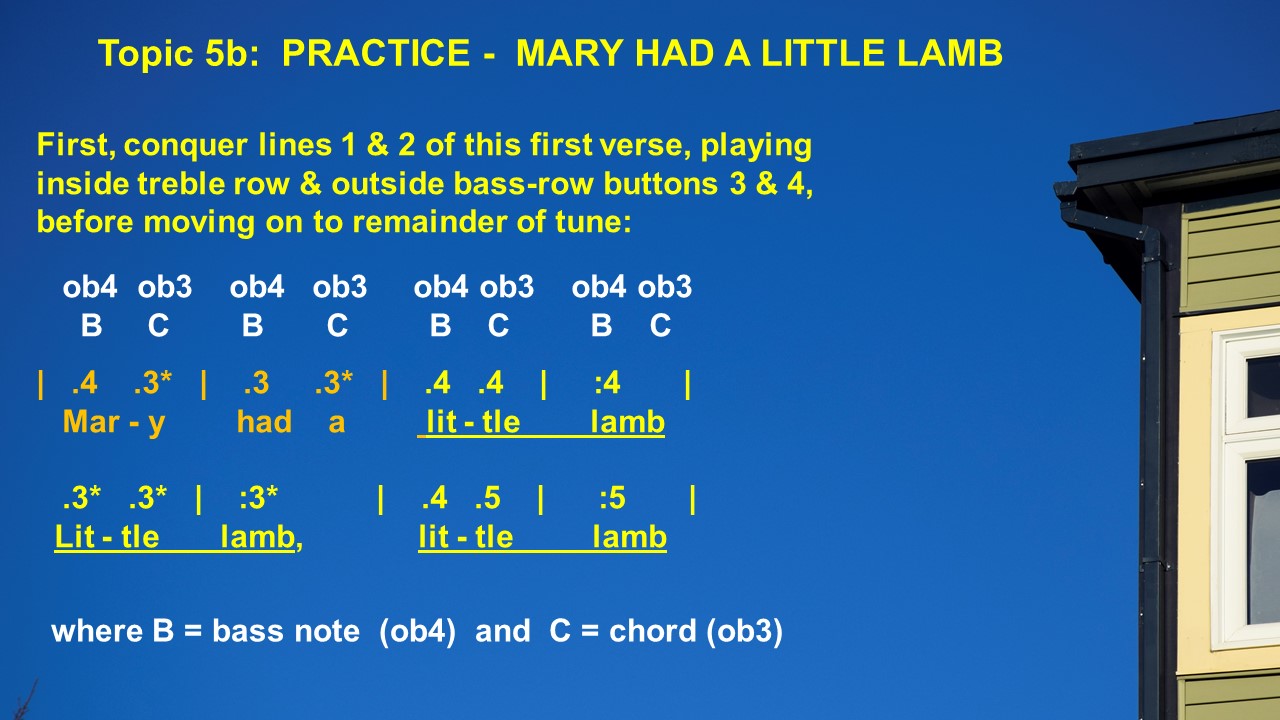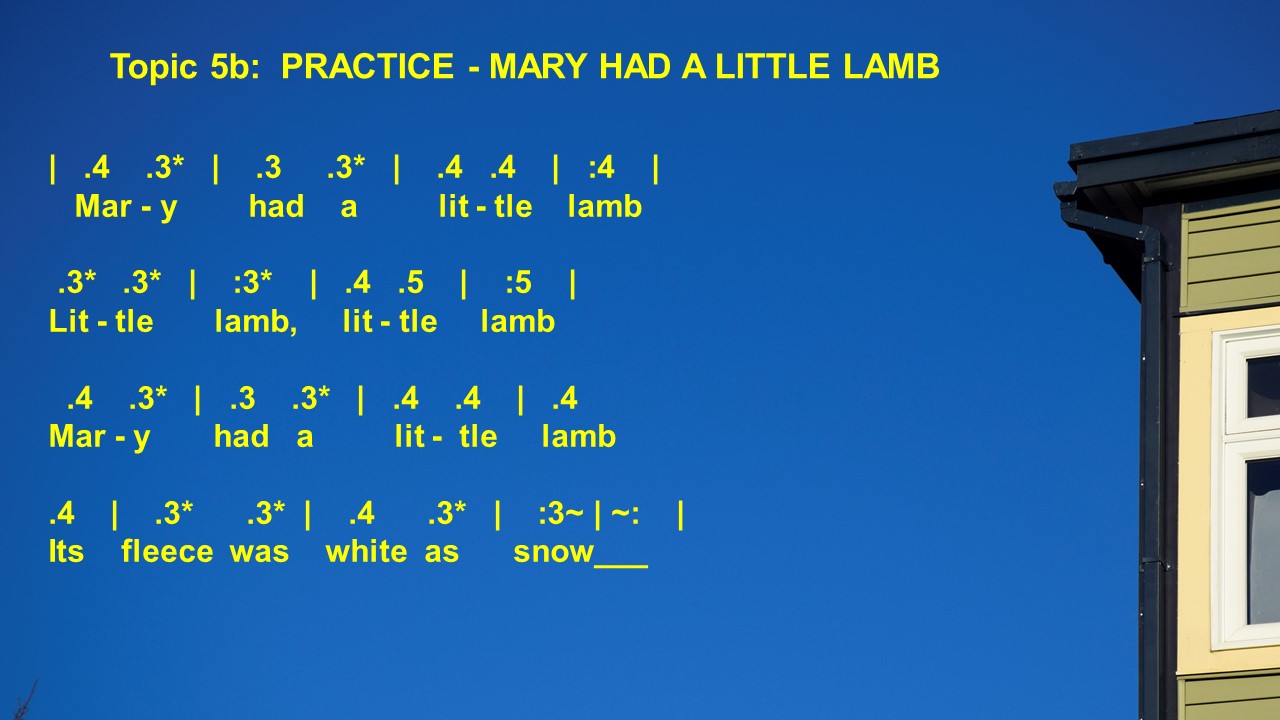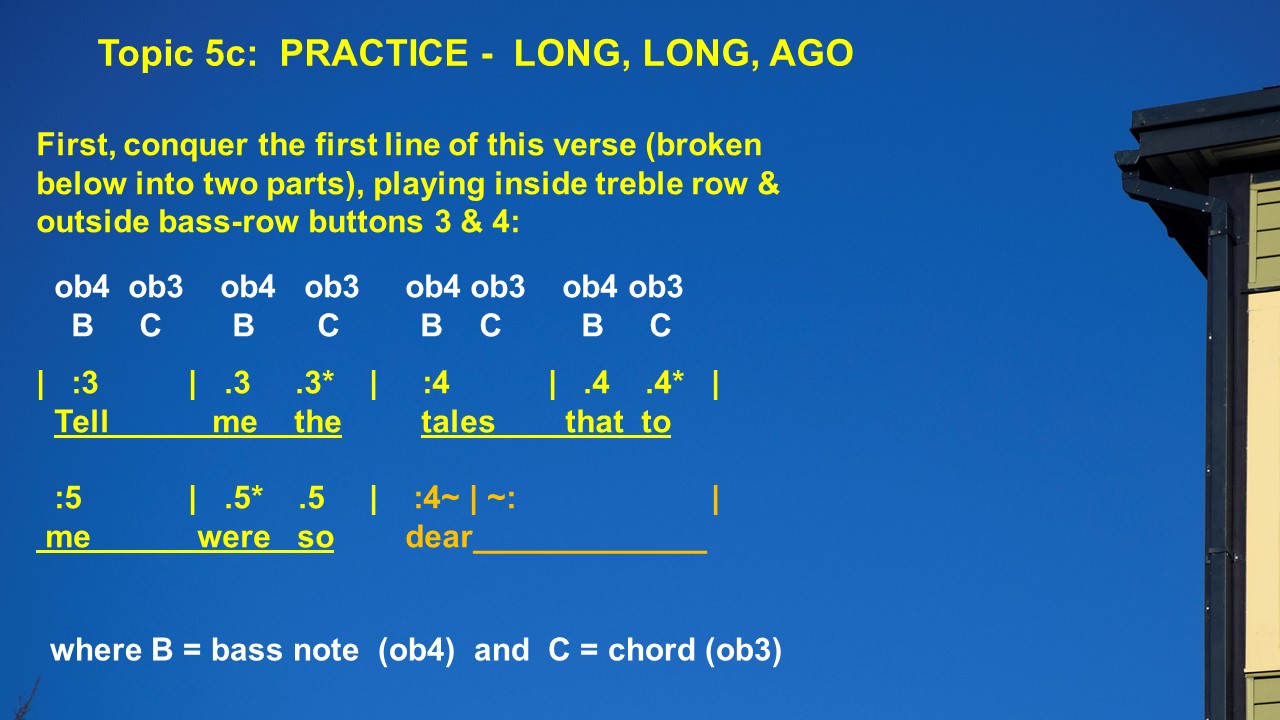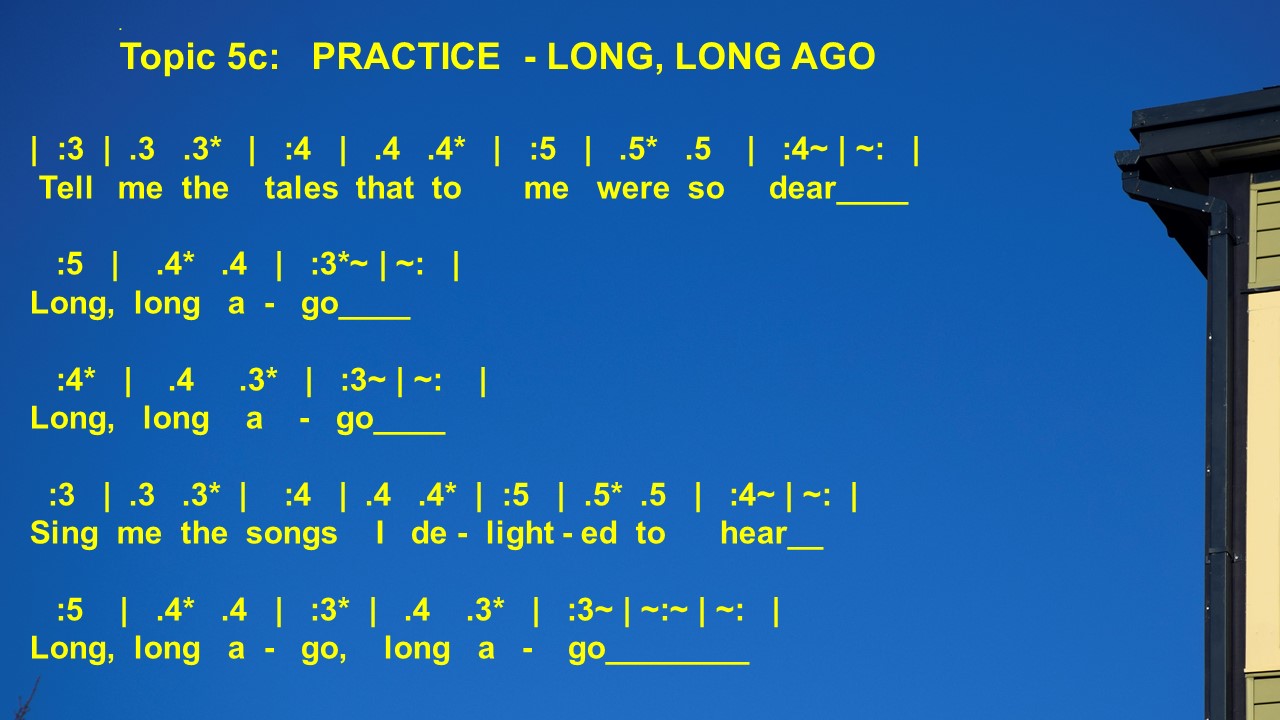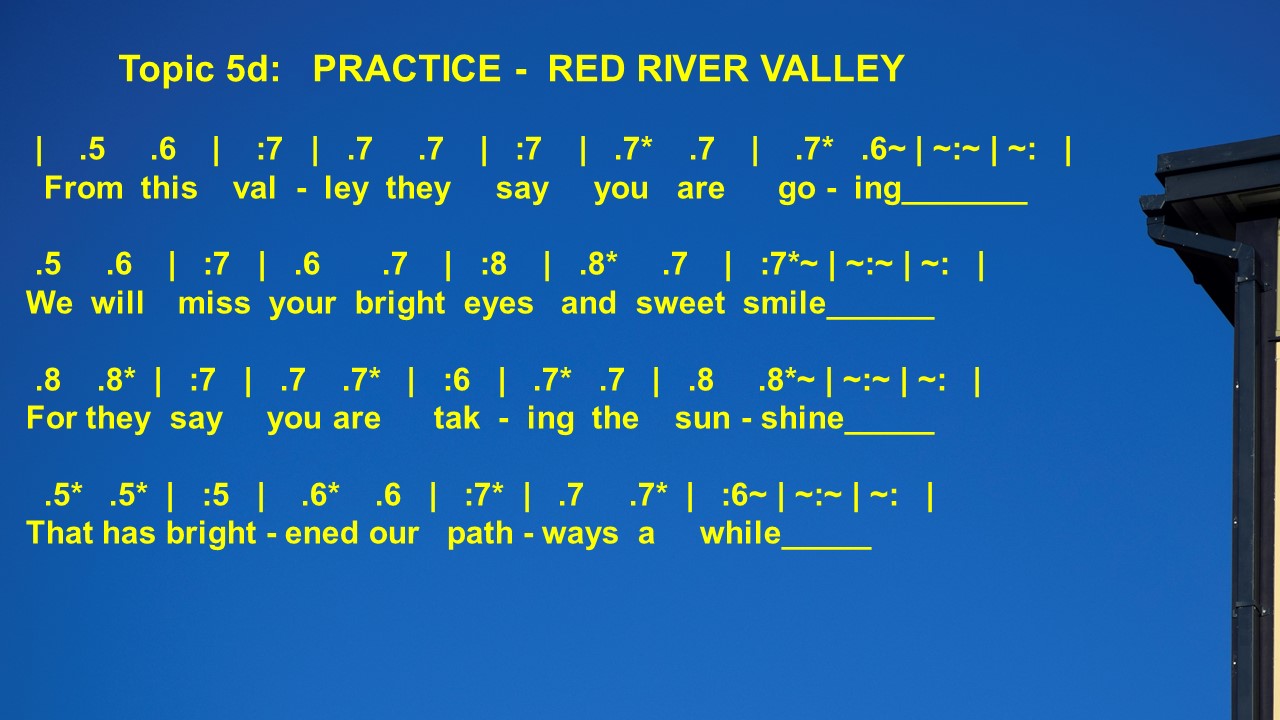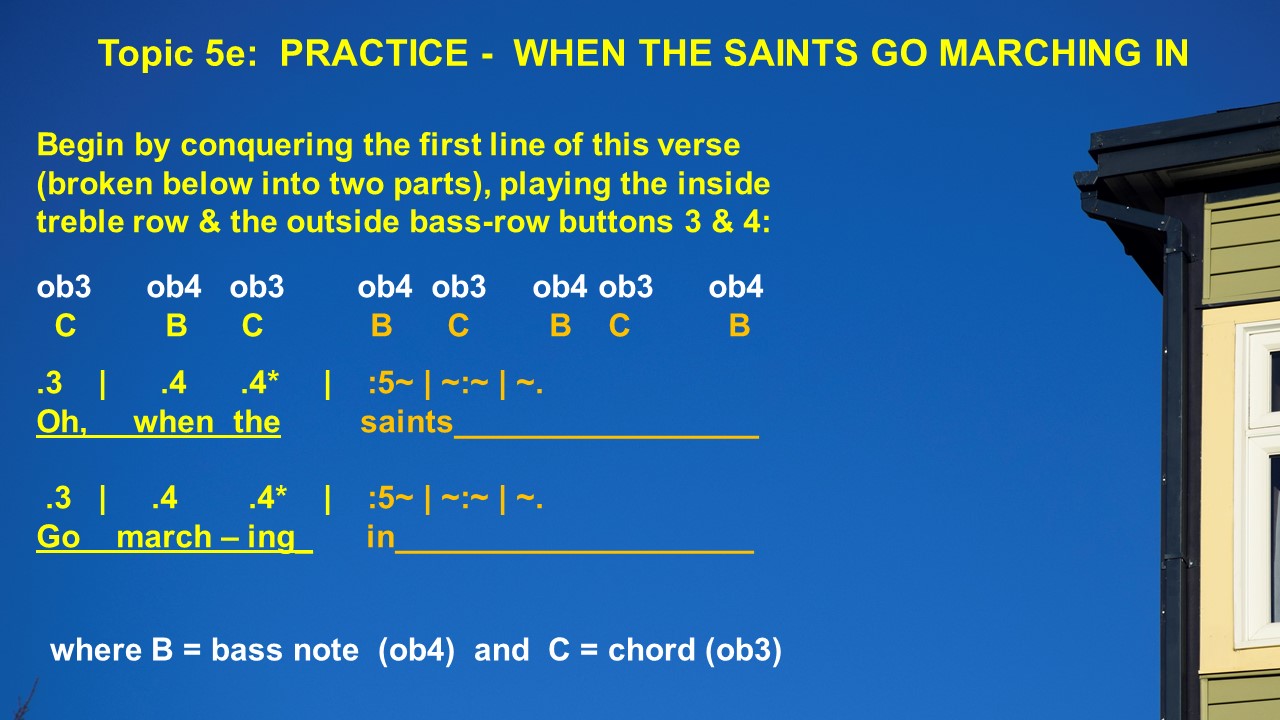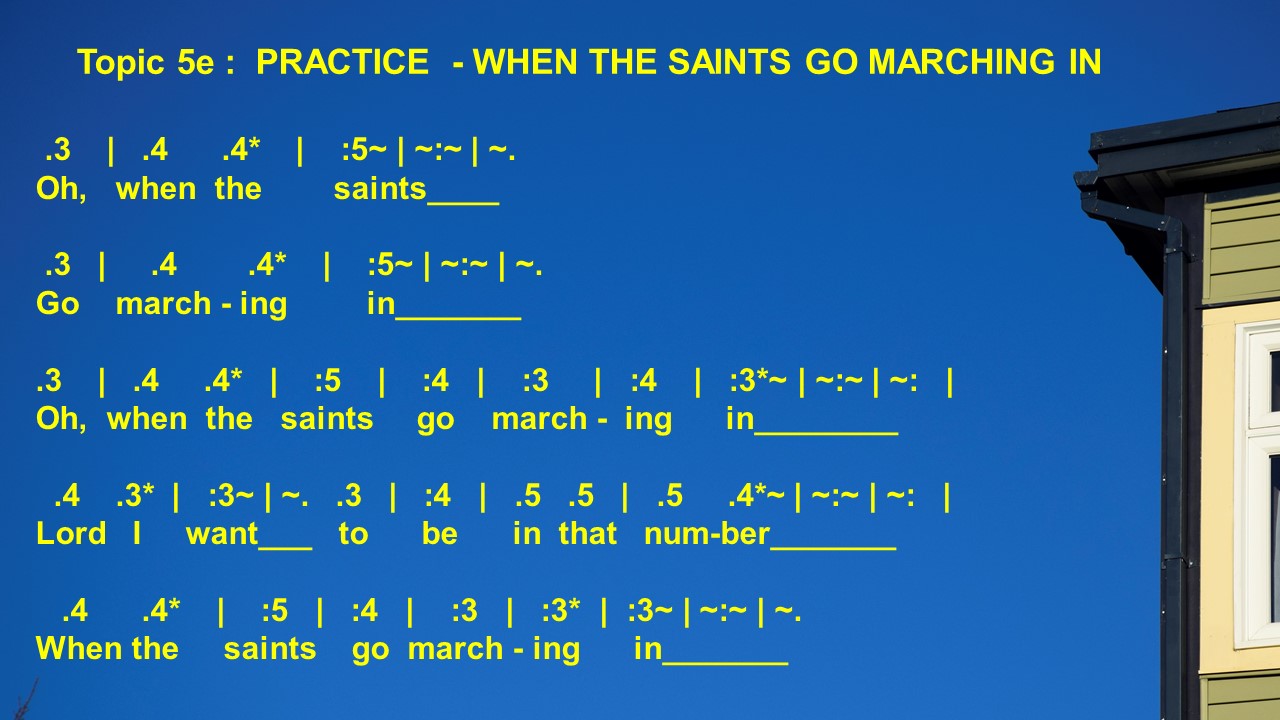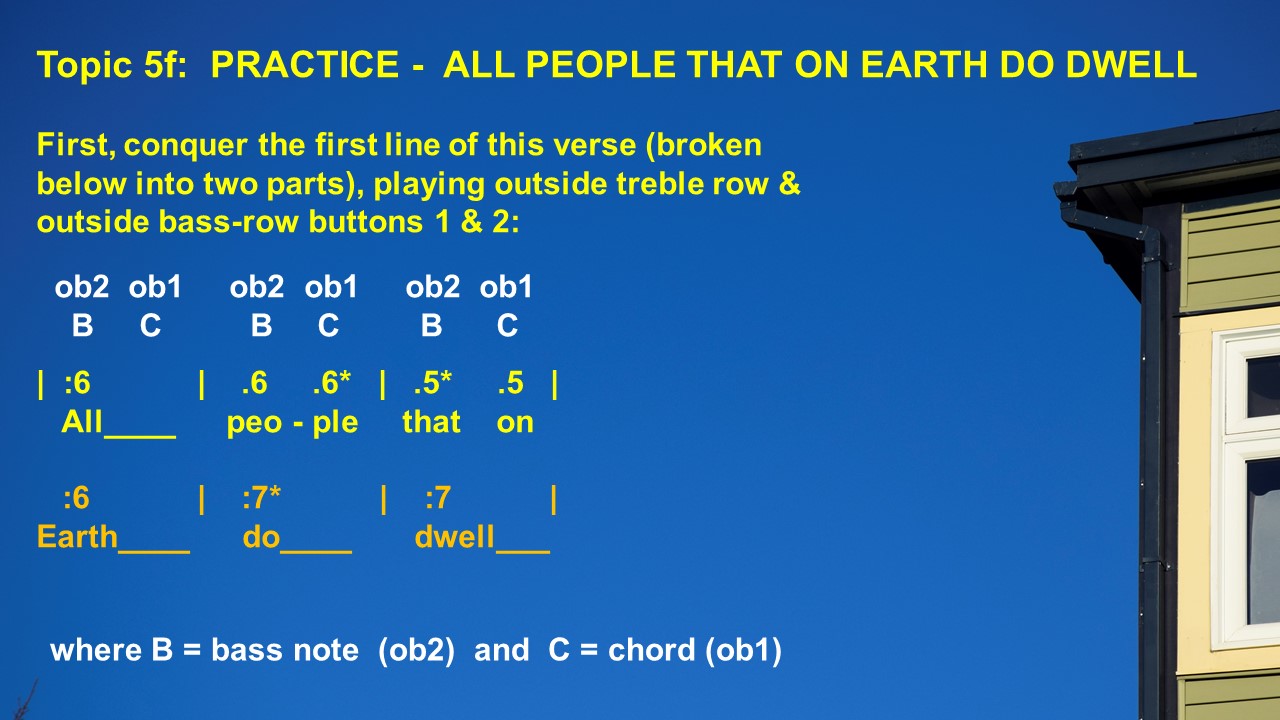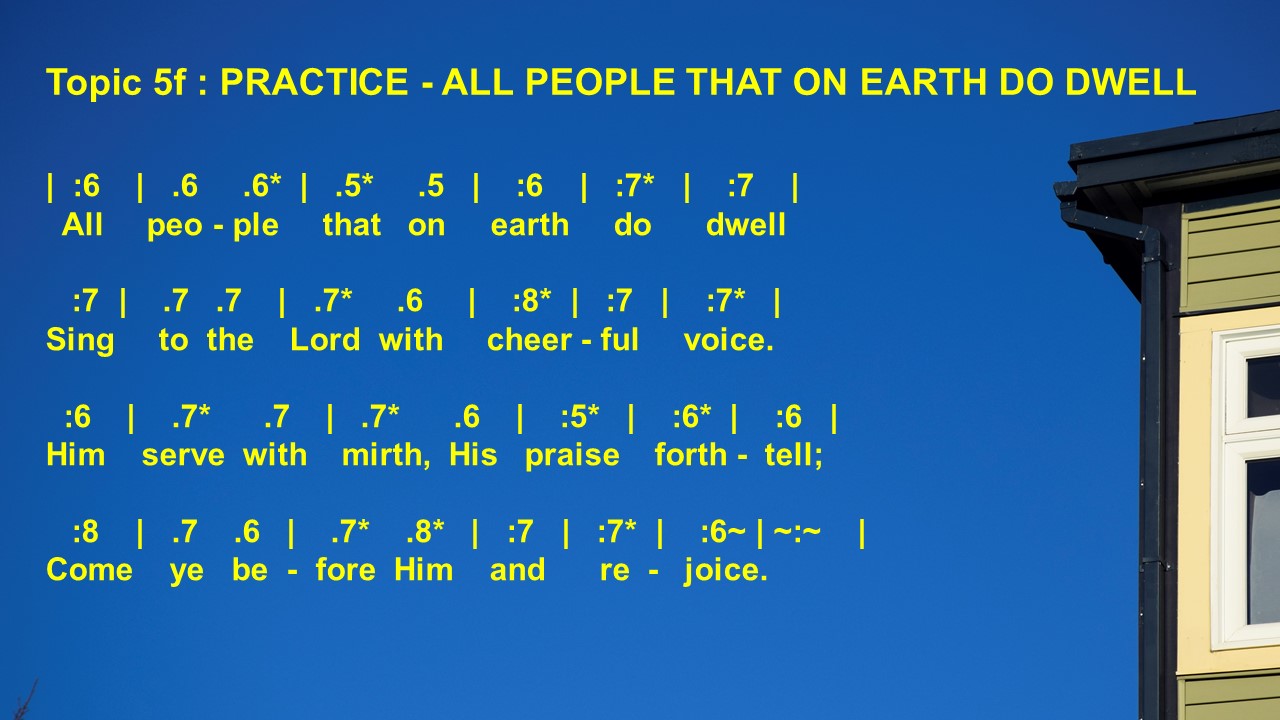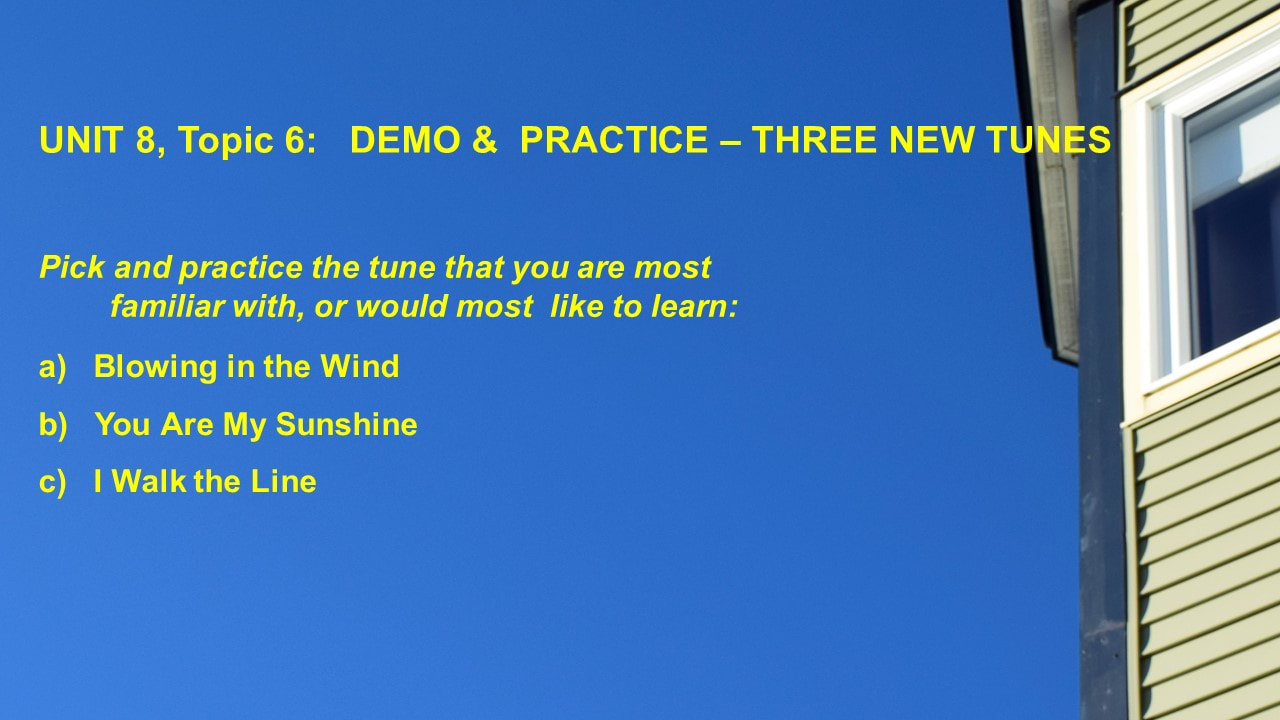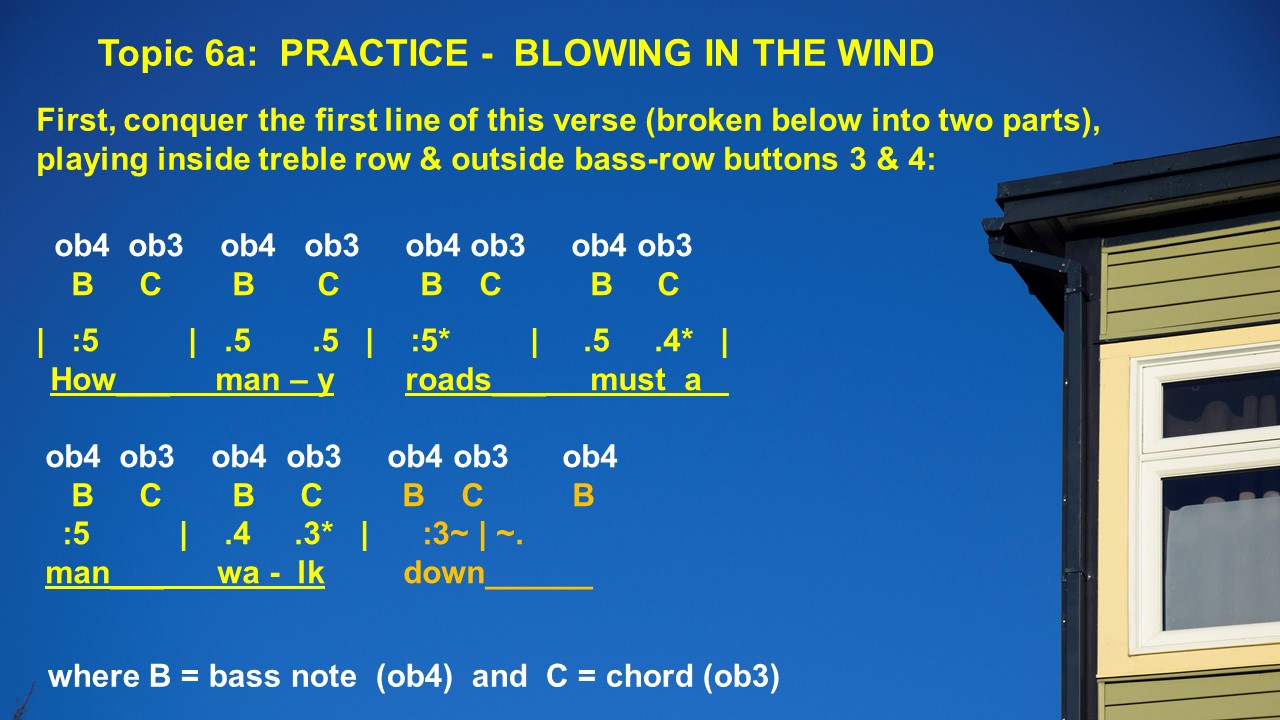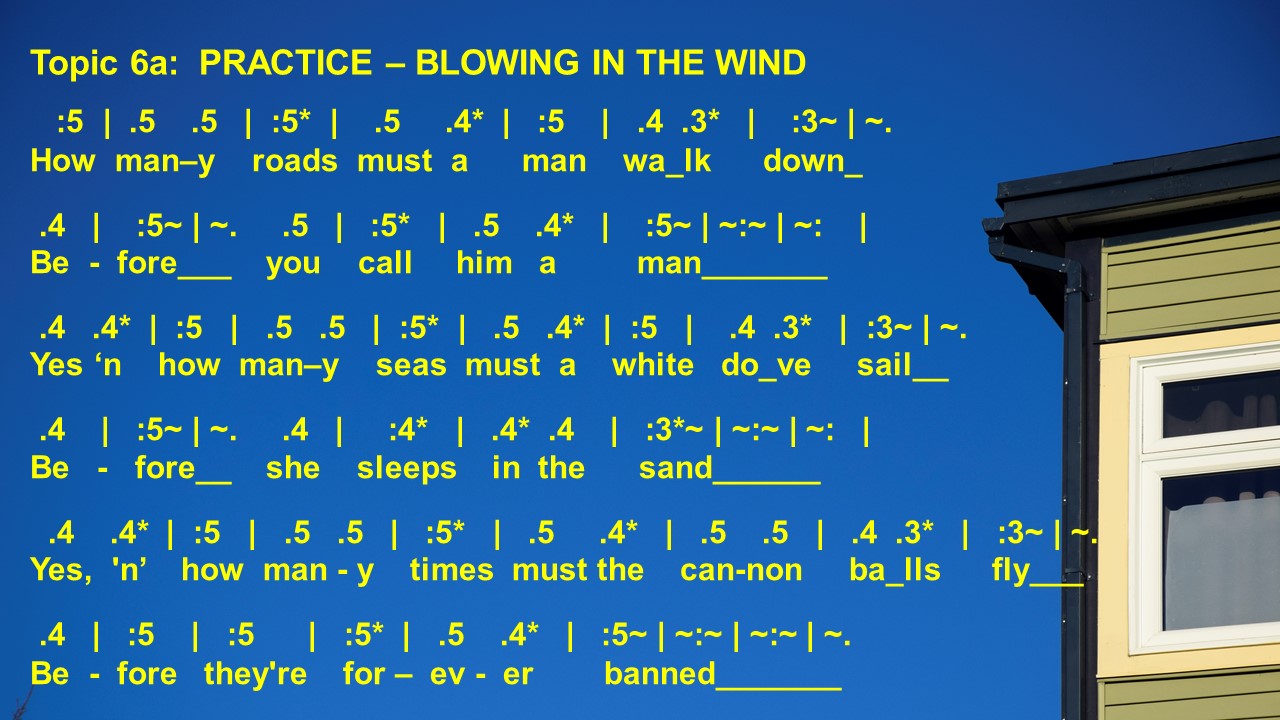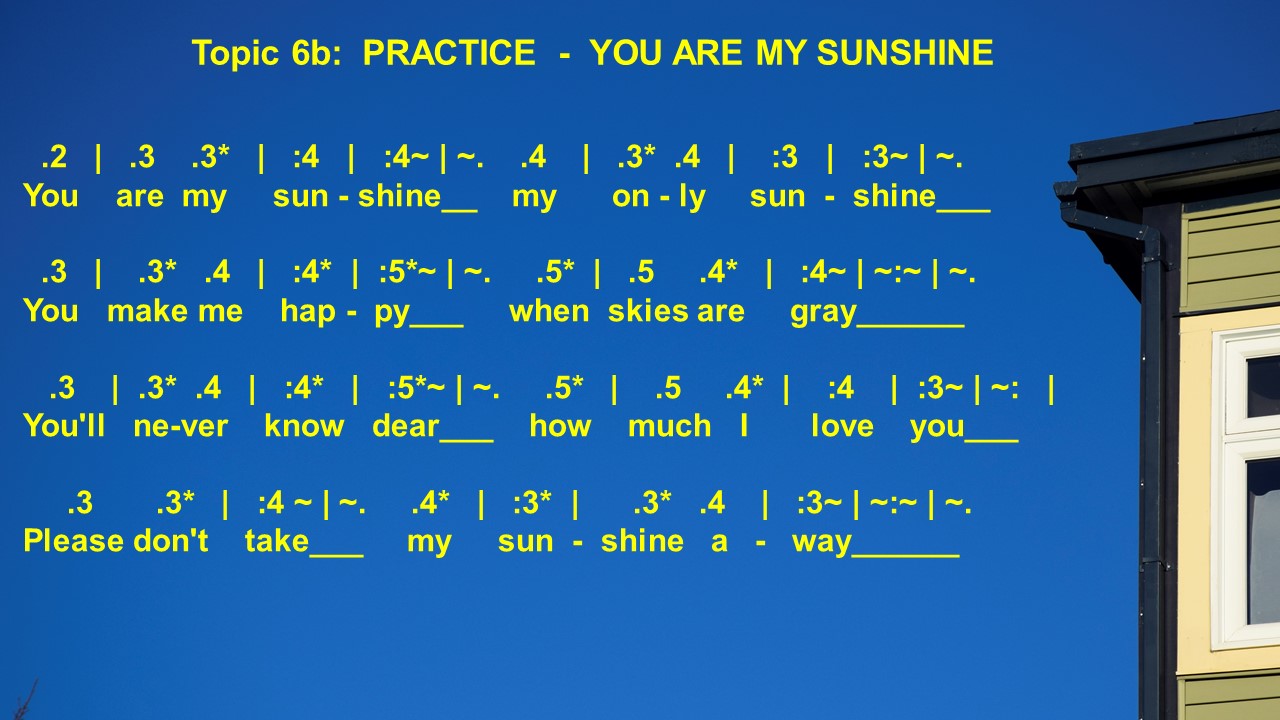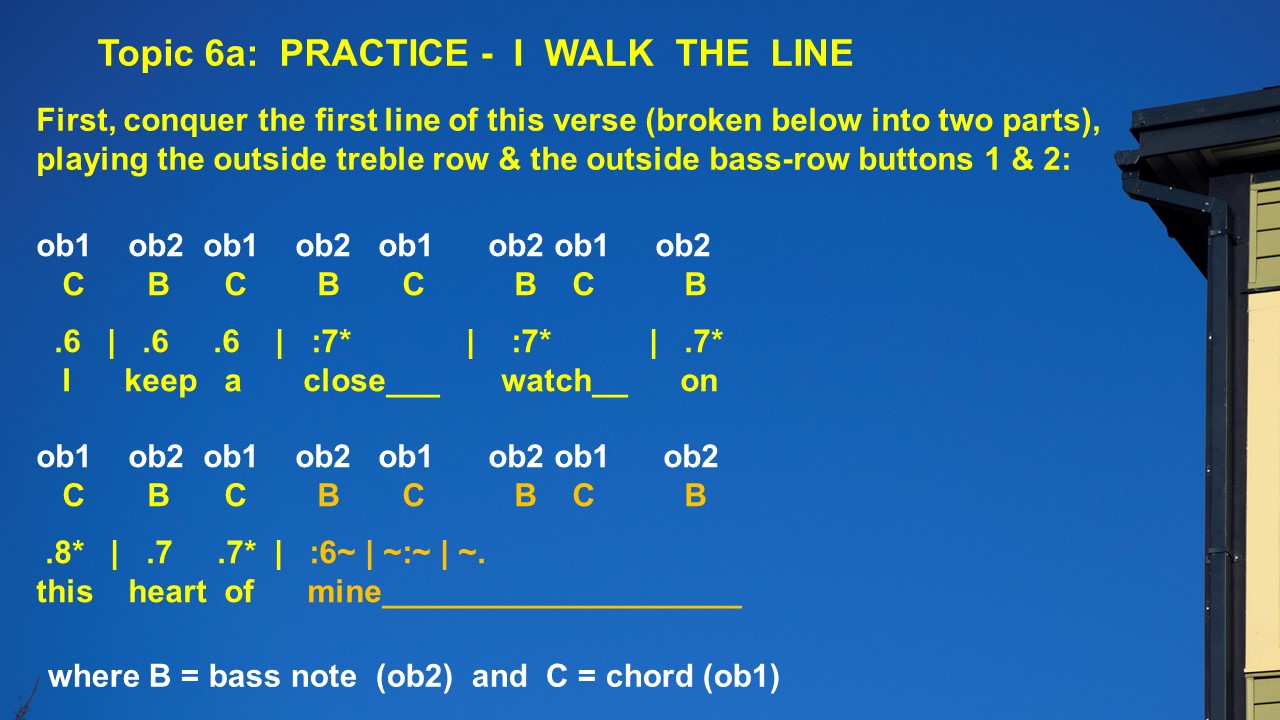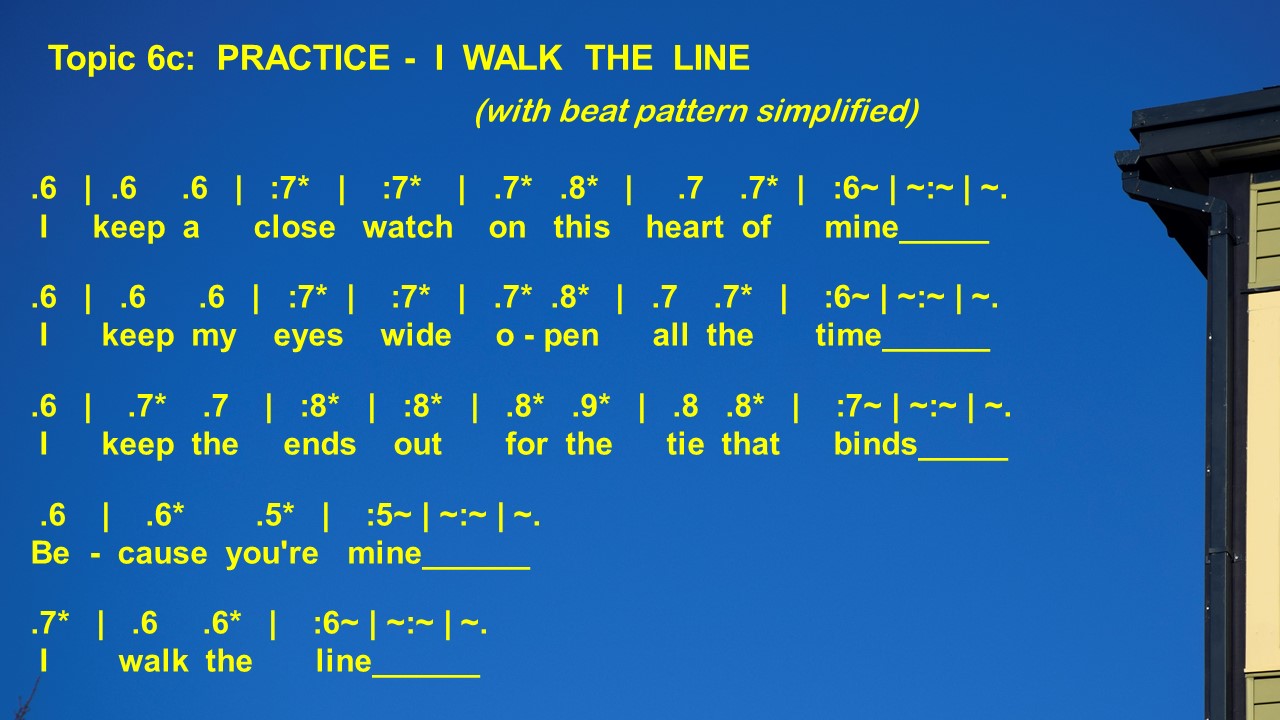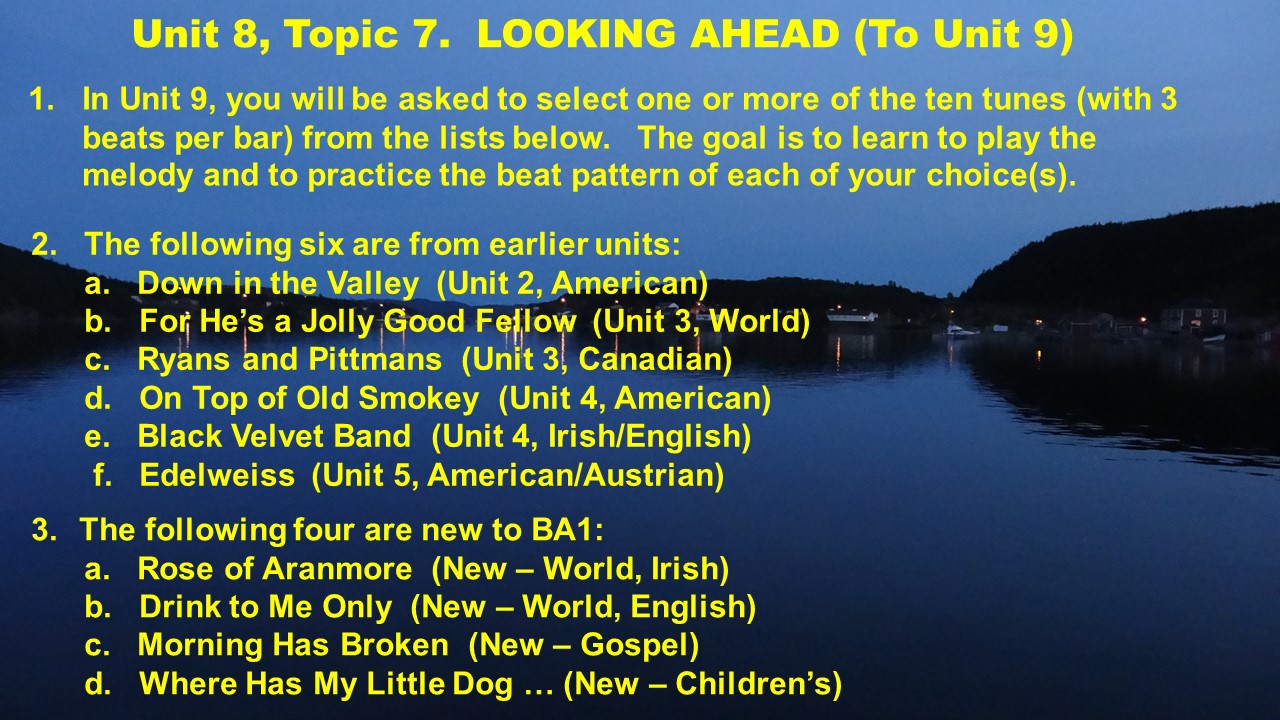Button-Accordion Project
(Dual-row G-C or A-D, with Accidentals)
Based on tunes2play4fun.com & Facilitated by ZOOM
MINI-COURSE BA1
The Button Accordion, its Music & Notation
UNIT EIGHT (of TEN)
Introduction to Tunes with Two Beats per Bar
(Dual-row G-C or A-D, with Accidentals)
Based on tunes2play4fun.com & Facilitated by ZOOM
MINI-COURSE BA1
The Button Accordion, its Music & Notation
UNIT EIGHT (of TEN)
Introduction to Tunes with Two Beats per Bar
SLIDES & COMMENTS
Slide 1 (Tutorial Project BA1 - Main goal)
Slide 1 (Tutorial Project BA1 - Main goal)
|
Slide 2 (List of units)
|
This Unit is an introduction to simple-time tunes that can be played with "two beats per bar."
The original notation for many of these tunes was "four beats per bar." As an introduction, and for simplicity, the tunes have been rearranged here with two beats per bar. We'll come back to "four beats per bar" again (briefly) in Unit 10. |
|
AN ASIDE: |
Simple-time accordion tunes with "two beats per bar" are not all that common; tunes with "three beats per bar" and "four beats per bar" are far more plentiful. However, "two beats per bar" is the usual pattern for many compound-time tunes, such as jigs, popular with many accordion players.
Compound-time TUNES are well beyond the scope of this introductory mini-course. (Though it is fun to play compound-time MELODIES, which is how many accordion players cover jigs, leaving other instruments, such as guitars, to provide the beat.) |
|
A general introduction to Unit 8: |
As humans, we seek variety, but we also enjoy patterns with repetition. For example, this is true of the food we eat, the games we play, the work we do, and the music we listen to. This is certainly true of our accordion playing, where melodic patterns are associated with the rise and fall in the pitch of the musical tones or notes, and where rhythmic patterns are associated with the increase and decrease in the lengths of successive musical tones or notes. In this Unit (and also Units 9 & 10), we explore the repetitive patterns of musical beats, and their contributions to a tune's overall rhythm. |
Slide 3 (List of Topics)
|
Beats are musical pulses, uniformly repetitive in time, and can be created in a number of ways.
Topics 1 to 4 deal with the purpose(s) of beats, with rhythmic beat patterns, with beat emphasis within bars, and with their button-accordion notation. Topics 5 & 6 are about Zoom and Home practice, and Topic 7 is our usual look ahead to the next Unit (9). |
Slide 4 (Purpose of beats)
Our immediate focus is on the beats produced by the accordion, specifically using its bass-note and chord buttons. However, it should be noted that sometimes it is another instrument, such as a drum set, a base guitar, or a group of rhythm (strumming) guitars that serves as the musical clock driving the music forward and keeping multiple instruments, including the accordion, on time.
Creation of beats: Tap on bass-note buttons 2 or 4 for bass-note beats.
Tap on bass-end chord buttons 1 or 2 for chord beats.
Alternating between bass-note beats and chord beats creates a beat pattern that helps enhance the tune's harmony, helps create a rhythmic beat pattern (albeit a simple one), and adds interest.
Creation of beats: Tap on bass-note buttons 2 or 4 for bass-note beats.
Tap on bass-end chord buttons 1 or 2 for chord beats.
Alternating between bass-note beats and chord beats creates a beat pattern that helps enhance the tune's harmony, helps create a rhythmic beat pattern (albeit a simple one), and adds interest.
Slide 5 (Creation of beats)
|
Even if player don't use the base-end buttons, they can create a "beat effect" by uniformly changing the loudness of selected music notes. They can do this by changing the intensity of the push and pull of the bellows.
Remember that the outside treble row is "matched" with the bass-end's outside buttons 1 & 2, and that the inside treble row is matched with the bass-end's outside buttons 3 & 4. |
Slide 6 (Bar and bar lines)
|
In music notation, "bars" and "measures" are the same; the first is popular in the UK and the second in the USA.
In NL and Ireland, at least, "drinking" bars are strongly associated with music. Perhaps its folklore, but I've heard that many lively gospel tunes in the late 1800's also came from "drinking" bars, though with different lyrics. |
Slide 7
Slide 8
Slide 9 - Beat patterns within bars
However, as noted in the above slide:
Given that we have two bass-end buttons matched to each treble row, we can use one of these for the first beat in a bar, and the second for the remaining beat (or beats).
For example, if we use the bass-note for the first beat, then we can use the chord button for the remaining beat (in a two-beat bar) or beats (in a three beat bar).
AN ASIDE: For 4-beat bars there are a couple of other options that we'll look at in Unit 10.
Given that we have two bass-end buttons matched to each treble row, we can use one of these for the first beat in a bar, and the second for the remaining beat (or beats).
For example, if we use the bass-note for the first beat, then we can use the chord button for the remaining beat (in a two-beat bar) or beats (in a three beat bar).
AN ASIDE: For 4-beat bars there are a couple of other options that we'll look at in Unit 10.
Slide 10 (List of practice tunes)
|
Here are nine of the tunes whose melodies we have covered in earlier units of this mini-course. Select one or more from this list.
The goal is to take a melody that you can play fairly smoothly, and to add the two beats per bar as shown in the notation. Some of these melodies have been simplified to make it easier for beginners. |
Suggestion 1: Precede your practice by playing a melody you like and know fairly well.
Then practice the left-hand tap accompaniment, stopping short of boredom or
frustration; don't "over-practice" in a single session.
End with a melody you like and know well.
Suggestion 2: In training your left fingers to tap the bass-end buttons, you can
i) take one bar at a time
ii) one rhythmic pattern at a time
iii) one line at a time
To help in the process, each tune is preceded by a "single" or "double" line practice slide.
Then practice the left-hand tap accompaniment, stopping short of boredom or
frustration; don't "over-practice" in a single session.
End with a melody you like and know well.
Suggestion 2: In training your left fingers to tap the bass-end buttons, you can
i) take one bar at a time
ii) one rhythmic pattern at a time
iii) one line at a time
To help in the process, each tune is preceded by a "single" or "double" line practice slide.
Slide
Slide 12
Slide 13 (Unit 8, Topic 4b - Two beats per bar)
Slide 14
Slide 15
|
This tune begins with a single treble note in its first 2-beat bar.
For such bars, you play BASS followed by CHORD, while holding the treble note for the two beats. You hold the last note on this slide for two full bars (while you tap BASS followed by CHORD with your left fingers for the two beats in each bar) |
Slide 16
Slide 17
Slide 18
Slide 19
Slide 20
Slide 21
Slide 22
Slide 23 (Three extra practice tunes)
Slide 24
Slide 24
Slide 25
Slide 26
Slide 27
Slide 28
Slide 29
Slide 30 (Unit 8, Topic 7 - Looking ahead to Unit 9)
|
AN ASIDE:
|
As we move into Units 9 and 10, some of you may be more interested in learning new melodies, than in moving into tunes (with left-hand beats). These "new" selections may be of special interest to you.
|
Slide 24
